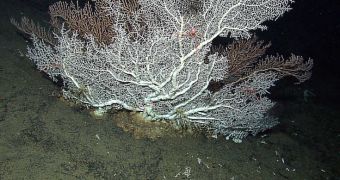Cutting edge technologies are enabling international collaborations of scientists to conducted groundbreaking research into the geology of the ocean floor. These studies also reveal amazing, secondary discoveries.
A team of scientists in Indonesia and the United States this summer conducted a series of scientific researches into the issue, using advanced observations methods to look for geological features as well as for unusual and beautiful marine creatures.
The research effort was coordinated from the Exploration Command Centers, which are located in Jakarta and Seattle, say officials at the US National Oceanic and Atmospheric Administration (NOAA).
“Seeing these live images from a world away is even more astounding and exciting than I had hoped it would be when we were planning this,” says Jane Lubchenco, PhD.
She is the US undersecretary of commerce for oceans and atmosphere. The expert also holds an appointment as the NOAA administrator.
“Having the ability to connect many scientists representing multiple disciplines to share observations in real time is invaluable,” Lubchenco explains.
From aboard the NOAA ship Okeanos Explorer, experts collected more than one hundred hours of video footage from the sea floor, in addition to approximately 100,000 photos.
The images were collected by high-definition cameras aboard the remotely-operated underwater vehicle (ROV) Little Hercules, which is operated by the Institute for Exploration (IO).
The videos and photos depicted the underwater world in never-before-seen detail. The investigation covered an area spanning between 800 meters and 2 miles in depth.
“Stalked sea lilies once covered the ocean, shallow and deep, but now are rare. I’ve only seen a few in my career, but on this expedition, I was amazed to see them in great diversity on nearly every ROV dive,” says Verena Tunnicliffe.
She is a study researcher and a professor at the University of Victoria in British Columbia, Canada.
“I’ve seen [large sea spiders] before in other places around seafloor vents. But those animals were perhaps an inch in size. The sea spiders imaged on this mission were huge, eight inches or more across,” she adds.

 14 DAY TRIAL //
14 DAY TRIAL //